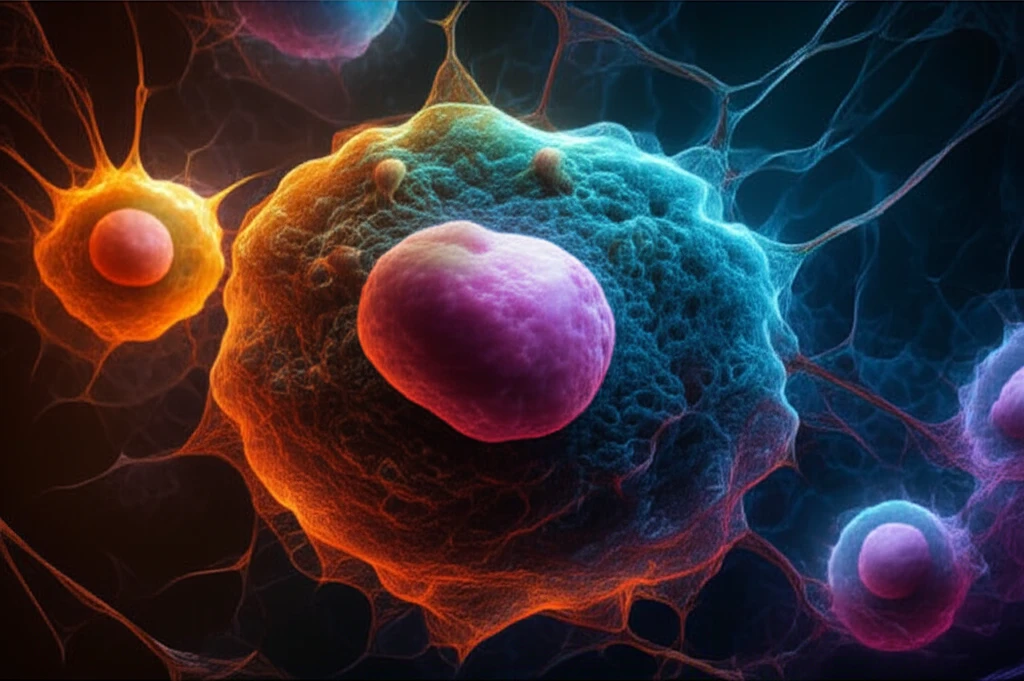
Unlocking Cell Secrets: How New Tech Reveals the Mechanics of Health
"Innovative Techniques Shed Light on Calcium Signaling, Cell Adhesion, and TRPM7's Role in Mechanotransduction"
The world inside our cells is a dynamic landscape where mechanics and biology intertwine. Understanding how cells respond to their physical environment – the rigidity of their surroundings, the forces they experience – is crucial for unraveling the mysteries of health and disease. Imagine cells as tiny, sophisticated machines, constantly sensing and reacting to pressure, stretch, and movement. These responses can dictate everything from how tissues develop to how diseases progress.
Researchers have been working to bridge the gap between the mechanical world and the biochemical signals within cells. New techniques in mechanical stimulation and adhesion measurement are providing unprecedented insights into these processes. These advancements allow scientists to apply controlled forces to cells and observe, in real-time, how they react. By understanding these intricate interactions, we can potentially develop targeted therapies for a range of conditions.
One area of focus is mechanotransduction, the process by which cells convert mechanical stimuli into biochemical signals. These signals influence cell behavior, including calcium signaling and adhesion. A key player in this process is the TRPM7 channel, a protein that regulates both calcium flow and cell adhesion. Understanding TRPM7's role in mechanotransduction could unlock new therapeutic avenues.
What is Mechanotransduction, and Why Does It Matter?

Think of mechanotransduction as a cell's way of "feeling" its environment and translating that feeling into action. Cells are constantly subjected to mechanical forces, whether from the pressure of surrounding tissues, the flow of blood, or physical contact with a surface. To survive and function, cells must be able to sense these forces and respond accordingly. This involves a complex interplay of proteins and signaling pathways.
- Development: Mechanotransduction guides tissue formation and organ development.
- Immune Response: Immune cells rely on mechanical cues to navigate the body and reach sites of infection.
- Disease: Aberrant mechanotransduction contributes to conditions like cancer, fibrosis, and cardiovascular disease.
The Road Ahead: Harnessing the Power of Cellular Mechanics
The techniques and findings in this study represent a significant step forward in our understanding of cellular mechanics. By combining precise mechanical stimulation with sensitive adhesion assays, scientists can dissect the intricate interplay between forces, signaling pathways, and cell behavior. Future research will likely focus on identifying new mechanosensitive proteins, unraveling the complex signaling networks involved in mechanotransduction, and developing therapeutic strategies that target these processes. As technology advances, unlocking the secrets of cellular mechanics will undoubtedly lead to breakthroughs in treating a wide range of diseases and improving human health.
